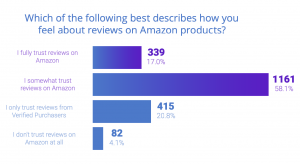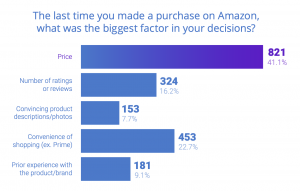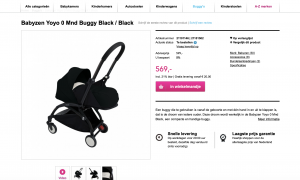The usual process of eCommerce growth involves the following stages:
- The simplest online store with a limited amount of products;
- Online platform based on the drop-shipping model;
- Marketplace with a large number of merchants.
Working as a small store you have the ability to control all information about products, prices, and manage it operatively. But how much you grow so much the quality of your store begins to decline. This is due to the fact that a large number of suppliers start selling through the platform. So you are no longer capable of controlling every step of their activities.
A lot of vendors do not match the level of a marketplace they work with. So the quality of the provided service is decreasing. The evidence of such a thing is:
- increasing of delivery time
- artificially inflating of prices
- products are often out of stock
- lack of product warranties
But the most influential problem is the low-quality content of product cards. Because of this, the number of order cancellations is increasing, and accordingly – the outflow of customers is rising.
By the way, after an outflow of the one customer, the marketplace loses much more than only the outflow of the one customer.
The largest marketplaces in the world, such as Taobao, Amazon, eBay, OnBuy, have long been aware that the product card is the basic value of the marketplace. So now they increase quality control and even ban merchants that violate the standards of providing content and service. Marketplaces are responsible for the customers and they have to set own rules of the game.
The Doofinder resource tells us how to make a high-quality product card. The main characteristics that a product frame must include in order to be visible and increase conversion:
Name or title – the first thing the user sees. The name should be clear, short, but at the same time attractive.
Short & long descriptions – text support that describes the main characteristics of the product, its advantages and reasons to buy.
Images & videos. A photo is an incredibly important attribute, along with the description they make up the bare minimum duo that you absolutely must optimize on a product card. More quality photos always mean improving the buying experience. Videos are not obligatory, but they help to involve customers.
Reviews – social proof is a vital characteristic of a product that leads to a purchase. This is a psychological phenomenon when people are inclined to believe the opinion of the majority. Especially if it is the opinion of experts or, for example, celebrities. Tinuiti’s study, “How Shoppers Browse and Buy on Amazon” shows that more than 75% of customers on Amazon trust or almost trust product reviews.
Related products – this section can recommend kits, demonstrate a wider assortment and induce cross-sales.

According to the Tinuiti survey, the TOP 3 key indicators for making a purchase on Amazon are price, rating or review and convincing product information. They all make up a product card which is the key factor in converting visitors into sales.

As packaging plays a huge role in attracting shoppers in offline stores, so product card in online-store leads to purchase. And it doesn’t matter if you sell through a small store or giant marketplace.
There exists a solution that improves product cards’ quality – Product Information Management (PIM).
PIM provides a single place to collect, manage, and enrich product information, and distribute it to sales and eCommerce channels. A PIM solution makes it faster and easier to create and deliver compelling product experiences.
For whom PIM is an indispensable solution?
In 2013 we received the request Dutch store chain BabyPark, the biggest seller of children’s goods. This global network had already implemented an omnichannel strategy, combining all sales channels – both offline and online. But at that time they still needed to optimize the product base for ensuring the best customer experience at any point of contact.
When such large retail chains go online from offline, it often has a very wide database of product assortment and parameters. In the case of BabyPark, the client came with a sizable and on-growing catalog of more than 40 product categories divided into thousands of products from clothes and accessories to furniture and vehicles.
In order for the omnichannel approach, all sales channels have to function correctly and provide users with the same and the most complete information. It was necessary to collect all the data in one system. Magento platform can function as ERP, but the more parameters are set, the slower the site will work. So we established a PIM system and integrated it into the existing Magento eCommerce platform. The whole assortment entered there, including titles, images, descriptions, available colors & models, videos, reviews, related products, methods of payment & shipping, etc. After launching PIM the product card of each item became more accurate and informative. Wherein the speed of processing requests on the site has even become higher.

PIM helped to increase the quality of provided information, to save time on data processing and their transmission to different sales channels. It’s noticed that the conversion rate is on the rise and the number of abandoned cards is close to zero.
3 Replies to “Does Product card matter? Absolutely!”